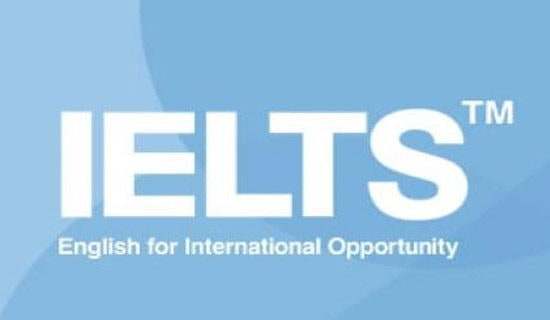雅思判断题实用解题技巧
判断题是雅思考试的常见题型,也是难度很大的题型。在普通培训类考试中最多达22题,在学术类考试中也不少于6题。目前有逐渐增多的趋势。其中True/False/Not Given 多见于General Training Module, Yes/No/Not Given 则多见于Academic Module, 因为Yes/No/Not Given最初是为学术类设计的。很多考生对判断题时常束手无策,特别对False和Not Given易混淆。要攻克判断题的难关,我们要分析它的命题规律,找出考察点,有的放矢,才能提高解题准确率。

首先,我们来看一看判断题的设题模式。
从设题模式可以看出雅思考试的考察点基本上可分为两大类:
1)信息点对应,即细节的对应和观点的对应。
例1:It rained heavily everywhere in North China.
Q: It rained in Beijing.
例2. Many people believe that the IELTS candidates must attend an IELTS training course before sitting the test.
Q: The author believes that the IELTS candidates should attend an IELTS training course before sitting the test.
2)简单的推理、总结和归纳能力;基本语言知识和常识。
雅思考试从命题角度不像TOEFL和GRE那样将不同的考察点置于专门题型中,而在一种题型中可能出现几个方面的考察点。但有一点考生要记住:由于雅思考试是一种语言能力的测试,它不考察专业知识,不考察阅读文章以外的背景知识(除基本常识以外,如简单的地理知识)。下面我们来看一看T/F/NG的基本定义:
1. True(Yes): 问题中的信息点或观点与文中的信息点或作者的观点一致。
例:1. It rained heavily everywhere in North China.
Q: It rained in Beijing.
2. By trying to do a better job of teaching, computer scientists may learn quite a lot themselves.
Q: Computer scientists are likely to learn a lot from teaching.
2. False(No): 问题中的信息点或观点与文中的信息点或作者的观点出现矛盾、冲突或排斥。
例: You can go to Shanghai by train or by plane.
Q: You must fly to Shanghai.
3. Not Given: 问题中的信息点或观点在原文中未提及,可能正确也可能不正确,界定范围模糊。
例:It rained heavily in most areas in North China.
Q: It rained in Shanghai. 或It rained in Beijing.
F和NG的根本区别在于F肯定与原文发生冲突和排斥,而NG则没有。例:You can go to Shanghai by train or by plane. Q: You must fly to Shanghai. 文中说去上海可有两种方式供选择,而问题则认为仅有一种。问题中的'信息点或观点与文中的信息点或作者的观点出现矛盾、冲突。又例:You can go to Shanghai by plane. Q: You must fly to Shanghai. 文中说可以乘飞机去上海,但并没有说这是不是唯一的选择,可能是也可能不是。而问题则认为仅有一种。问题中的信息点或观点与文中的信息点或作者的观点没有出现矛盾和冲突。
解题方法:根据判断题的命题规律和考察角度,我们可以运用简单推理和语言技能分析考察点来作出判断。可从以下几个主要方面考虑:
1、界定题中考察点和原文对应部分的范围或概念以及相互关系
如果范围或概念一致,并有从属、相容的关系,一般为True。如果范围或概念不一致,并出现冲突则为F。如果范围或概念界定模糊,或范围或概念不一致,但又没有直接冲突则选NG。对NG题原文中没有直接对应句,但可能有干扰句,一般可将干扰句看作参考对应句。
例: You can go to Shanghai by train or by plane.
Q: You fly to Shanghai.(T)
Q: You must fly to Shanghai. (F)
Q: You may probably go to Shanghai by bus. (NG)
又例:Educational standards in schools have, in general, been gradually improving.
Q: Schools have been getting better. (T)
Q: The education in schools has not been improving. (F)
Q: Educational standards are not as unsatisfactory as they used to be. (NG)
Tuition fees in this university usually rise by 3-5 percent annually.
Q: The university raises the tuition fee by 3-5 percent every year. (F)
Q: The tuition fees in the university rose by 4 percent last year. (NG)
More than half of the college’s 6000 students are over 19 years old.
Q: There are now 6000 students over the age of 19 in the college. (F)
Cooking can only be done in the kitchen in the dormitory.
Q: Cooking can not be done anywhere in the dormitory. (F)
Q: Cooking cannot be done everywhere in the dormitory. (T)
可以看出分清是整体还是局部的关系,是绝对还是相对的概念至关重要。因此一些表示范围、程度和数量的词如:always, all, some, little, only, must, usually, never等经常是题目中的考察点。
【雅思判断题实用解题技巧】相关文章:
雅思阅读判断题解题技巧08-25
2017雅思阅读是非判断题解题技巧08-21
英语阅读理解推理判断题的实用解题技巧06-25
2017雅思阅读判断题型详解08-13
雅思听力填空解题技巧01-13
雅思听力经典题型解题技巧01-14
雅思考试解题技巧10-31
雅思阅读选择题解题技巧08-25